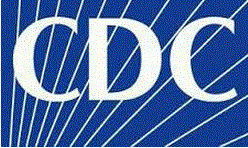 (CNN) — There are about 20 million new sexually transmitted infections (STIs) each year in the United States, costing some $16 billion in direct medical costs, according to numbers released Wednesday by the Centers for Disease Control and Prevention.
(CNN) — There are about 20 million new sexually transmitted infections (STIs) each year in the United States, costing some $16 billion in direct medical costs, according to numbers released Wednesday by the Centers for Disease Control and Prevention.Young people are disproportionately affected, the agency said, with half of all new infections occurring in people ages 15 through 24.
“In general, CDC estimated the total number of infections in the calendar year, rather than the number of individuals with infection, since one person can have more than one STI at a given time” or more than one episode of a single STI, officials said. But “CDC used conservative assumptions in generating its estimates, so the true numbers of STIs in the United States may be even higher than estimated.”
The new data highlights the unique challenges of each infection type.
For example, human papillomavirus (HPV) accounts for about 14 million of all new infections, the CDC says. About 90% of HPV infections disappear within two years without causing serious harm, but others can lead to diseases including cervical cancer in women.
A vaccine is available and recommended for 11- and 12-year-old boys and girls; it protects against some of the most common types of HPV that can lead to disease, according to the agency.
In contrast, HIV infects a much smaller 41,000 people each year, but lifelong treatment and care costs an estimated $304,000 per person, and about 18,000 people with AIDS die each year in the United States, according to the data.
There are more than 110 million STIs nationwide overall among men and women, the CDC says. The majority of those are HPV infections, estimated at 79.1 million.
“Because some STIs — especially HIV – require lifelong treatment and care, they are by far the costliest,” according to the analysis. In addition, HPV is particularly costly due to the expense of treating HPV-related cancers. However, the annual cost of curable STIs is also significant ($742 million). Among these, chlamydia is most common and therefore the most costly.”
“All STIs are preventable. They’re all treatable, and many are curable. But if they’re left untreated, they can lead to pretty serious lifelong problems and even death,” says Catherine Satterwhite, a CDC epidemiologist and lead author of the new estimates.
“Individuals need to talk openly to their sexual partners, and to their doctors about getting tested and they need to reduce their individual risk. They need to vaccinate. They need to consider ways to reduce their risk like practicing abstinence, using condoms correctly and consistently every time, and being in a mutually monogamous relationship.”
The CDC recommends that adults and adolescents be tested for HIV at least once. Additional recommendations:
— All sexually active women aged 25 and younger should be screened annually for chlamydia, as well as older women with risk factors such as new or multiple sex partners.
— At-risk sexually active women, such as those with new or multiple sex partners, should be screened yearly for gonorrhea.
— All pregnant women should be screened for syphilis, HIV, chlamydia and hepatitis B, and at-risk pregnant women should be screened for gonorrhea at the first prenatal visit.
— All HIV-positive women should be screened annually for trichomoniasis.
— All sexually active gay, bisexual or other men who have sex with men should be screened at least once a year for syphilis, chlamydia, gonorrhea and HIV; men who have multiple or anonymous male sex partners should be screened more frequently for STIs (three- to six-month intervals), and men who have sex with men and use illicit drugs such as methamphetamine, or have partners who do, should be screened more frequently.











